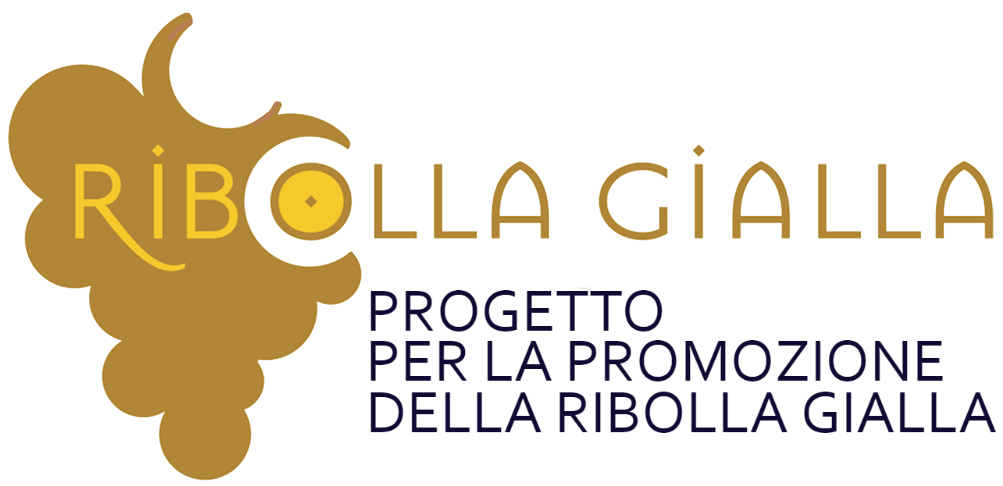RIBOLLA GIALLA – History – The Origins
Premise
Premise The Ribolla Gialla Wine.
Historical sources from the Middle Ages to the modern age are in agreement: Ribolla was a wine. There are no sure attestations of vines with this name until a couple of centuries ago. This is normal because all written sources are related to wines (transport, trade duties, regulations, etc.) while the vines are only mentioned at the dawn of the amelography, a very recent discipline that we can trace back to the early nineteenth century. The names of the vines, which even had to exist, do not find space in the papers that have come to us since the vines were not objects of commerce, gifts and regulations; normally they were reproduced by seed by the grower or, more frequently, multiplied by vegetative means. The first attestation of a vine in Friuli is rather late and it is not by chance that it is a very particular variety that gives a monovitigno wine with peculiar characteristics and high quality, the Picolit, which appears only in 1699. We know the places of production of Ribolla wine: some Greek islands, Istria, the eastern hills of Friuli in the area between Cividale and Gorizia, and Romagna. In the Venetian economy this wine was one of the so-called “navigati” (such as Malvasia, Cyprus, Romània, etc.) to be understood as “foreigners”, transported with the ships of the Serenissima, to be distinguished from local wines called “terrani”. . The numerous testimonies gathered in Italy clearly demonstrate that the Ribolla wine was known and appreciated, with moments of real success, even outside the Friuli Venezia Giulia Region, thanks to the Venetian and Florentine trade. As a “navigated” and “foreign” wine, it is mentioned in the statutes of some Italian cities, Boccaccio speaks of it in 1375, in Venice it was known and appreciated at least since the fourteenth century, the Aretino was greedy…
A good commercial flow was also directed towards the German-speaking countries where it took the name of Reinfal.
The wines were mainly white and sweet: they were, in all likelihood, the ones that today would be called “sweet filtered”, but there is no doubt that the types of wine varied with the era and geography, in time and space. It is equally undoubted that it had been grapes from different vines depending on the production areas.
After a long period in which the vine was now disappearing, since 1990 a slow recovery continues in the cultivation of Ribolla Gialla, which remains confined in the central-eastern hilly areas. The rediscovery is linked to small businesses that want to keep alive the link with the territory that has traditionally hosted the vine.
A more decisive recovery begins with the new century, when the vine is taken into consideration by medium and large companies. The cultivated area thus increases constantly.
Since 2010, following the massive planting of the Glera variety (Prosecco), Ribolla has been towed as a lowland vine variety for the production of grapes to be used as base wine for sparkling wine production. At the end of the seventies, Manlio Collavini, with a cellar in Corno di Rosazzo, decided to dedicate 4.5 hectares of land to an ancient native variety, interpreting it as a sparkling base: the Ribolla Gialla. As Professor Attilio Scienza stated, the Ribolla Gialla is “the most oriental variety present in Friuli Venezia Giulia and was introduced by the Roman legions which, from Pannonia, went to Gaul via Friuli”. The result achieved was thus a brut Ribolla Gialla obtained thanks to a new interpretation of traditional methods of sparkling wine. The Collavini Method was born from the idea of bringing the times and techniques reserved for the Classic Method to Martinotti-Charmat, combining the advantages of both and therefore today allows us to find a sparkling wine of absolute balance and quality in the brut Ribolla Gialla.
Currently in Friuli Venezia Giulia Ribolla is a monovarietal vine, still or sparkling, obtained from the Ribolla Gialla vine.
It can therefore be said that this classic hillside vine (its cultivation was recommended on top) will find part of its future in the flat part of our region. Once again shows how to save a genotype to pass to posterity may have an unpredictable economic potential. This trend also shows how a wine can change over time while maintaining the same name: the Ribolla wine has been, depending on the times, a sweet filtered, a kind of “vin santo”, a “turbolino”, a more than honest and a pleasant still wine and, finally, a sparkling wine which wishes a radiant future of quality in the sea of bubbles.
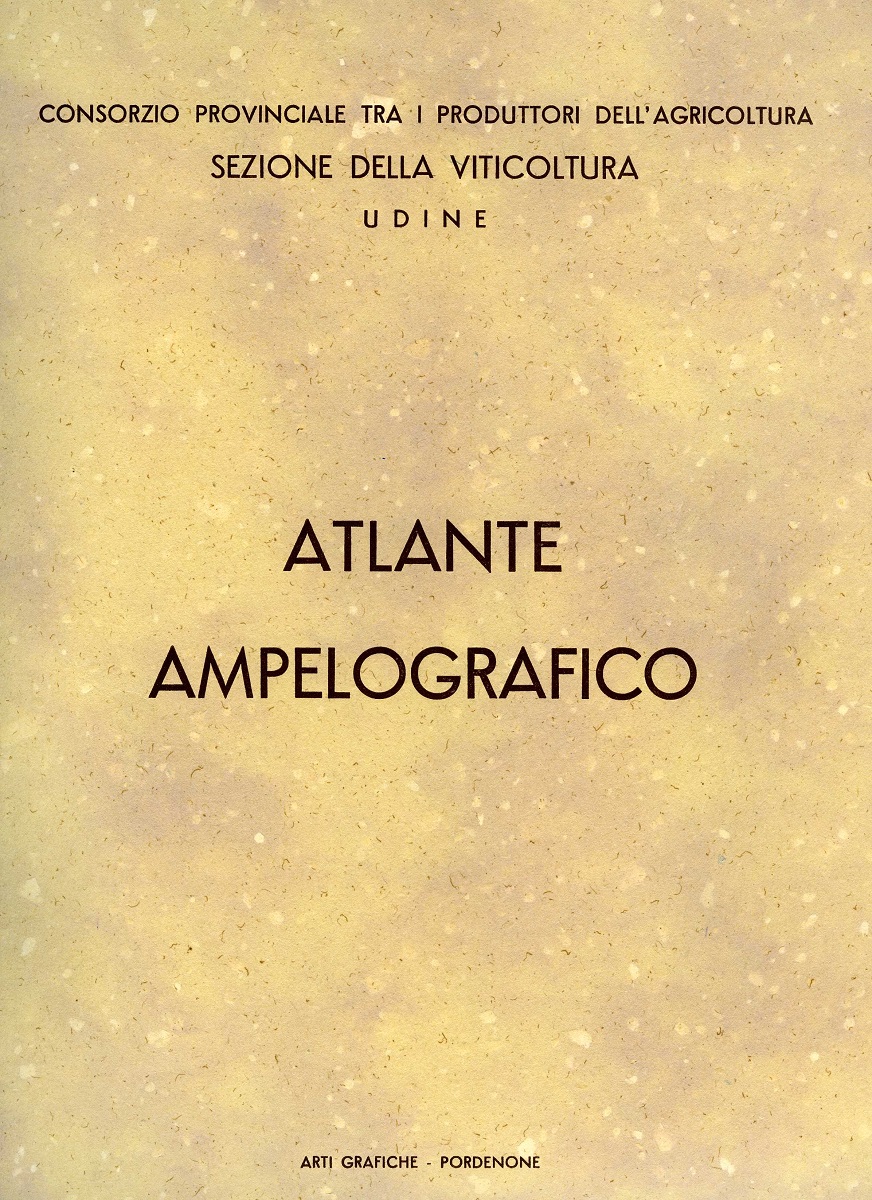

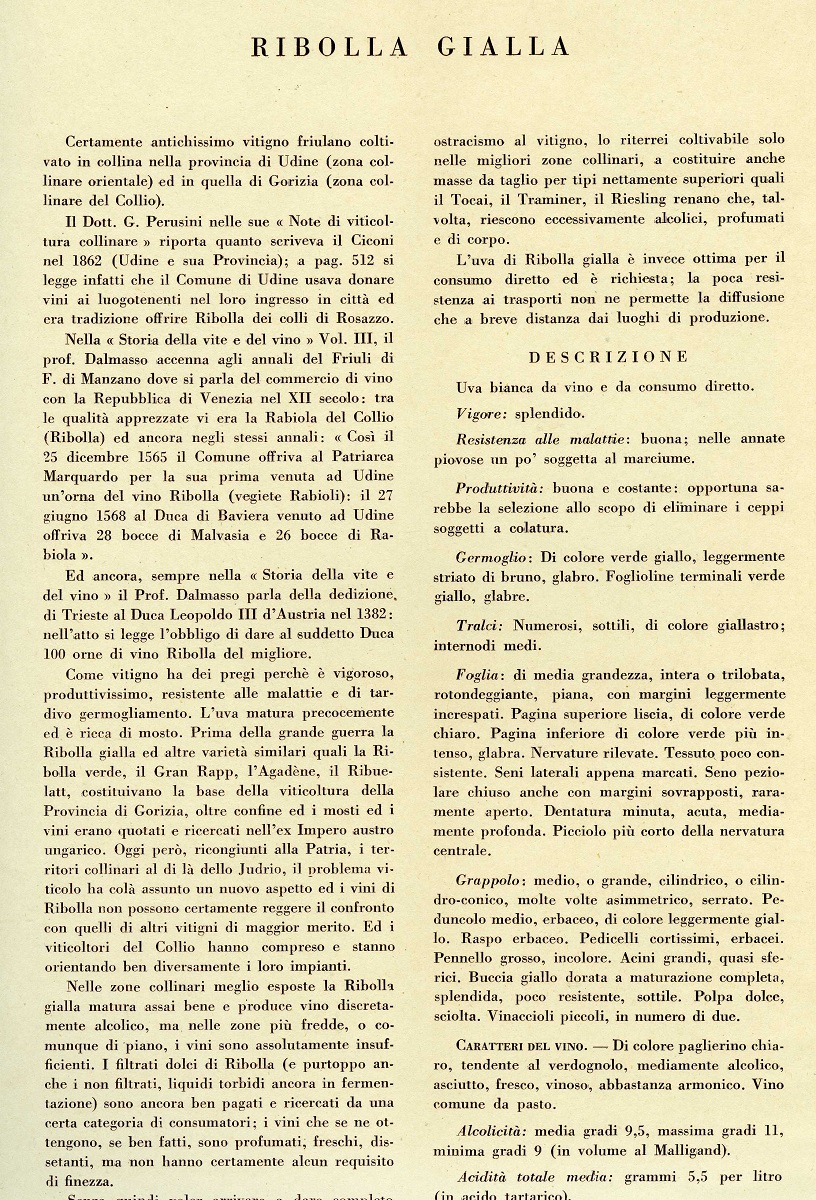
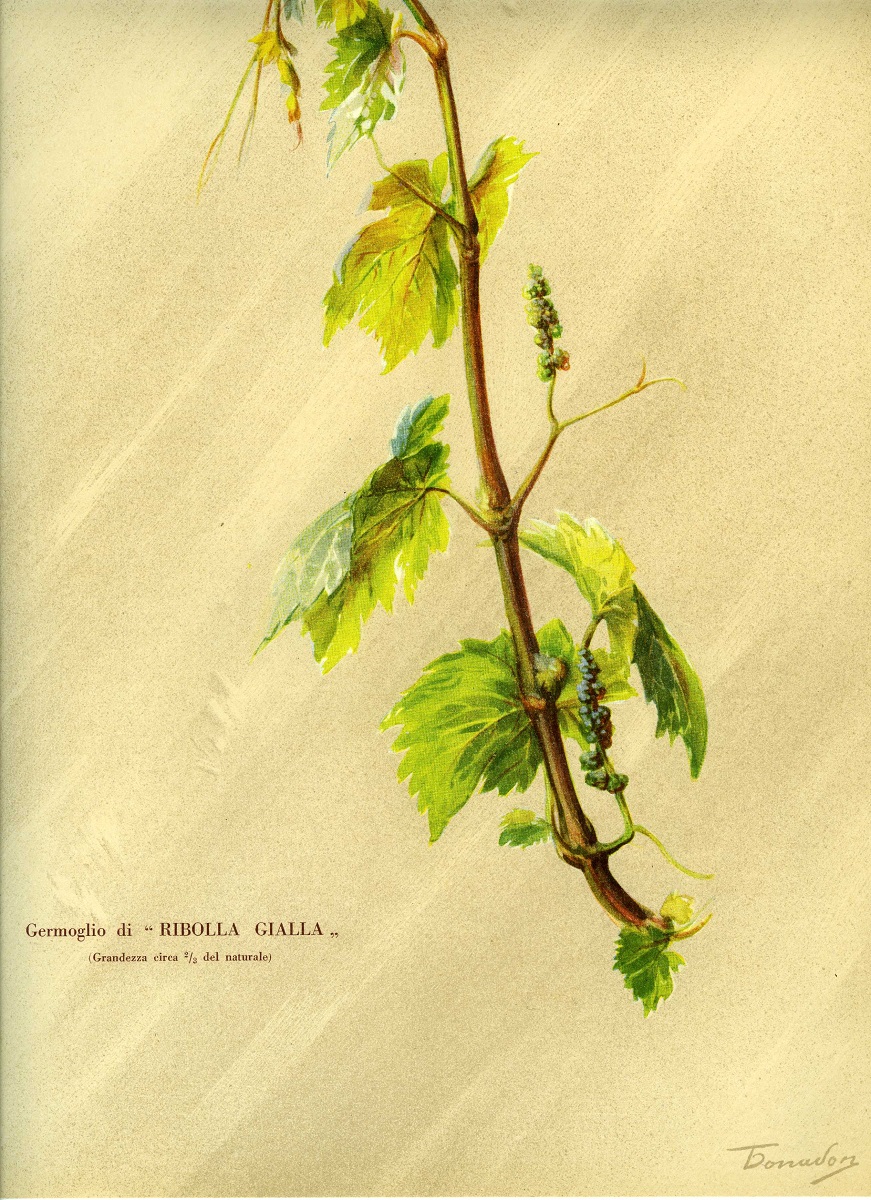
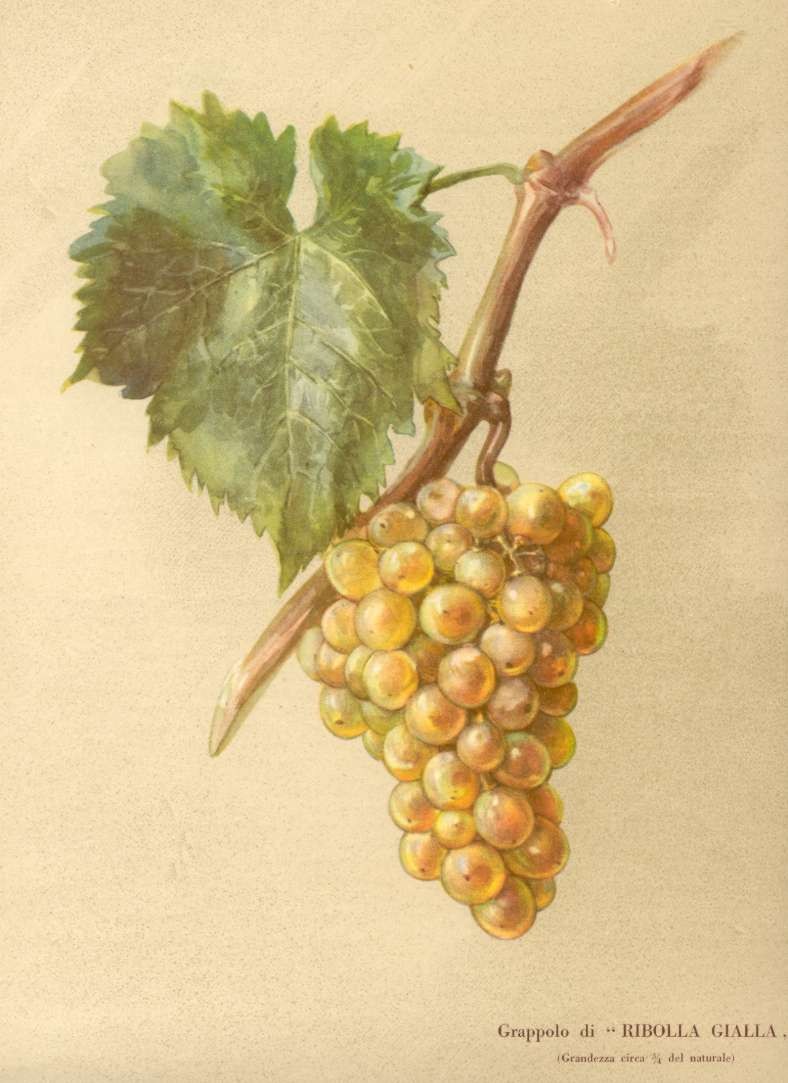

Ribolla sparkling wine in Friuli: a story that starts from afar. Rodolfo Rizzi.
In the years after the first world war a famous company manager, Rino Russolo, shuttled strictly with car and chaffeur between the countryside of Jesolo, washed by the river Piave, and the hills of Farra, lying on the banks of the Isonzo: still two sacred rivers to the homeland. This young and brilliant director of Pordenone origin was employed by Piave Isonzo, a farm belonging to the Bennati family (today owned by Villanova), located precisely in the municipality of Farra d’Isonzo.
Rino Russolo was fascinated by how the world of wine was evolving and one day he happened to meet one of the leading Italian sparkling wine experts, Professor Berti of Asti. Between the two began a nice partnership that had as an immediate result the start of the first studies to identify the native varieties. Then called “local”, more suitable for sparkling wine, a technique that in Friuli had no tradition.
The company Piave Isonzo established itself, first in the region, of an autoclave built in enamelled iron by the Padua company of Conegliano Veneto, to be used for the production of sparkling wine using the “Charmat-Martinotti method”.
The Charmat method, long used in Piedmont to obtain the sweet sparkling Moscato, involves the use of the autoclave, unlike the “classic method”, used for Champagne, where the sparkling process takes place in the bottle. Thus was born the first Friulian sparkling wine, in the two sweet and dry versions, which was called “Lacryma Christi”. For the sweet sparkling wine the variety Moscato rosa d’Istria was used, while for the dry one it was made a blend with Ribolla gialla and Istrian Malvasia: according to Russolo these were the local varieties that gave the best qualitative results.
Hence we must recognize Rino Russolo both the paternity of the first regional sparkling wine and the use of the Ribolla gialla variety as a starting point.
Continuing the history of the local sparkling wine we must not forget the engineer Zvonimir (Miro) Simcic, director of the cellar of Castel Dobra, former Yugoslavia, which in the early sixties transformed the Ribolla gialla (Rebula), vinified in purity in the rolling hills of Brda, in a refined sparkling wine.
Manlio Collavini, father of the reborn sparkling yellow Ribolla, is also a part of these memories. He is a winegrower of the past who, with his tenacity and commercial skills, has made known the Ribolla Gialla sparkling wine also outside the national borders. Today the sparkling wine of the company located in Corno di Rosazzo is recognized as a true method of processing called precisely the “Collavini method”. And then all the others came.
Conclusion
With the name Ribolla, in the past, more types of wines have been produced and marketed (among all we mention the sweet filtrates) coming from different geographical areas. The vines used for the production of these wines are partially known at least only recently and, for the most part, have fallen into oblivion because the tastes of consumers have completely changed.
The Prosecco and the Ribolla Gialla are an exception. The latter has been saved because it is admitted in certain grapes or adopted, in truth by not many winemakers, for the production of pleasant still whites. Thanks to its characteristics, it opens itself up an unprecedented scenario determined by the success of sparkling wines.
Courses and appeals …
Texts taken from RIBOLLA STORY by Enos Costantini
